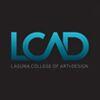The Donald Bren School of Information and Computer Sciences (ICS) at University of California, Irvine (UC Irvine or UCI) is home to the Department of Informatics. Within the department are several paths to study games. Options include the Game Design and Interactive Media (GDIM) BS; and the Computer Science BS, MS, and PhD programs. Across programs, students benefit from courses taught by globally-recognized industry experts; industry mentors; and access to industry partners such as Disney, Riot Games, Cartoon Network, Blizzard Entertainment, Electronic Arts (EA), Obsidian Entertainment, Tencent, and Age of Learning.
The GDIM BS launched as the Computer Game Science major in 2011. To avoid confusion among employers, UC Irvine decided to change the name to Game Design and Interactive Media in Fall 2021. Today, the GDIM program provides hands-on courses that explore areas such game programming, game design and development, game studies, interactive storytelling, visual design, and data science.
The program also explores augmented and virtual reality (AR/VR), and emerging technologies such as mobile and tabletop games. During the second half of this four-year program, students will have the opportunity to build a professional portfolio through advanced electives that explore game design, development, and programming; game culture; games entrepreneurship; and storytelling. GDIM BS at UC Irvine culminates with a two-quarter capstone project. Students will complete the capstone under the guidance of industry mentors. This team-based project results in a finished game in an area such as entertainment, education, training, or healthcare.
Graduates are prepared to pursue careers across the game design and other related industries. Potential employers include industry partners such as Electronic Arts (EA), Blizzard Entertainment, Riot games, Obsidian Entertainment, Disney, Cartoon Network, and Tencent.
Program alumni have landed roles such as Game Designer, Game Programmer, Game Developer, Game Artist, Project Manager, and Interactive Media Designer. Some GDIM alumni have gone on to become successful freelance designers, while others have launched their own studios.
Computer Science at UC Irvine allows students to specialize in areas such as game design through electives and formal focus areas. The Computer Science BS has nine specializations. The Algorithms, Visual Computing, and Networked Systems specializations are ideal for students interested in studying game design, development, and programming. The Algorithms specialization explores topics such as Computer Games; Artificial Intelligence, and Graphics.
Visual Computing explores topics such as Computer Vision; Graphics; and Interactive and Photo-Realistic Image Rendering. Networked Systems covers topics such as Programming; Internet Architecture and Applications; and Performance. Across specializations, students have the opportunity to take the Computer Game Development project course as well as Modeling and World Building; Projects in Advanced 3D Computer Graphics; Human Computer Interaction; and Introduction to Virtual Reality, among others.
The Computer Science MS and PhD programs at UCI Donald Bren provide access to courses such as Game Design; Model and World Building; Game Engine Lab; Mobile and Ubiquitous Games; and Computer Graphics. Across programs, students are required to select four areas from a list of seven. Areas include Scientific and Visual Computing; Data Structures and Algorithms; System Software; Artificial Intelligence; Networks/Multimedia; Database Systems; and Architecture/Embedded Systems.
The culminating experiences for the Computer Science programs can be a game, research project, simulation, or other project. Graduates are prepared to pursue roles in the games industry (for entertainment); serious games in areas such as healthcare, education, and training; and other areas such as software engineering and aerospace; national defense and cybersecurity; or data science and engineering.
Established in 1965, University of California, Irvine is a member of the Association of American Universities (AAU). Founded in 1900, the Association comprises the nation’s top research universities. Also accredited by the WASC Senior College and University Commission (WSCUC), UC Irvine employs more than 1,200 faculty members and 10,000 staff, making it the largest employer in Orange County, California. The faculty and staff at University of California serve approximately 37,245 students enrolled in around 225 degree programs across 18 colleges, schools, and divisions.












